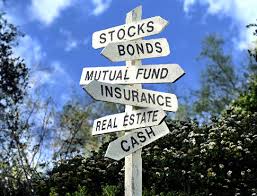
Harry Markowitz ( http://rady.ucsd.edu/faculty/directory/markowitz/ ) is credited with the comment that diversification is the only free lunch in investing.
Mathematically diversification is about UNCORRELATED movement of asset prices. There are many ways people tackle this including MPT, Post-MPT, risk-parity and others. I focus on the number .707. (I used it when designing microprocessor chips worrying about how many electrons I needed to get in place on time)
It is a VERY useful rule of thumb when combining assets with random returns (iid) that have LOW CORRELATION. Each time you DOUBLE the basket of assets the variance (standard deviation of returns) will be reduced by .707. For example...
- 1 Asset volatility N
- 2 Assets volatility ~.707 * N or 30% less
- 4 Assets volatility ~.707^2 * N or 50% less
- 8 Assets volatility ~707^3 * N or 65% less
- 16 Assets volatility ~.707^4 * N or 75% less
- etc.
Notice the reduced bang for the buck. The reality is that it is VERY difficult to find 8 uncorrelated assets and getting harder with globalization (global equity markets have become more correlated the last 15 years). The biggies are Cash, Equities, Bonds, Real Estate, Absolute Return, Managed Commodities and Gold.
I don't like it when large funds claim higher diversification because they have small positions. This is usually driven by liquidity constraints rather than diversification optimization and pushes returns to the mean. Yes a bankrupt company is a RISK FACTOR that gets diluted with large positions but equities are equities. Buffett has said 10 and Cramer often works around the 8-10 range.
So focus on getting close to 8. Nine won't help that much and the leap to 16 is tough even for Bridgewater Associates ( http://www.bwater.com ) and David Swensen ( http://en.wikipedia.org/wiki/David_F._Swensen ) did well by adding just one (timberland) to the Yale endowment.


